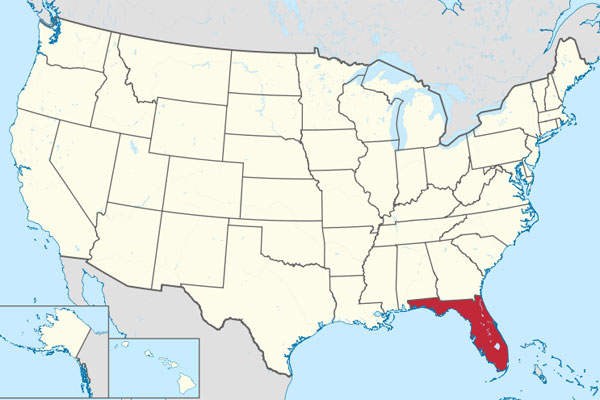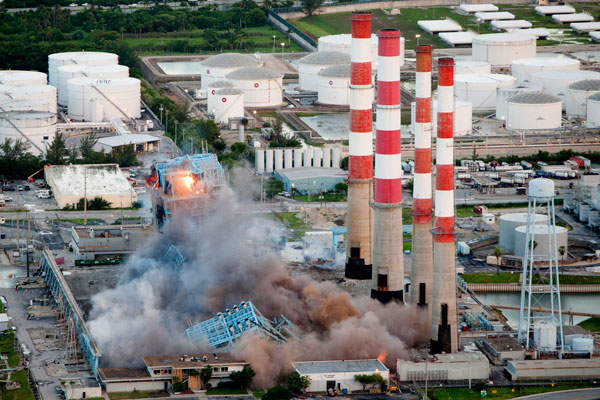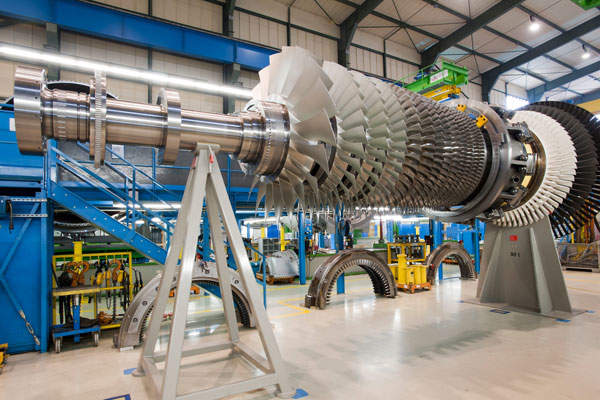Florida Power and Light Company (FPL) commissioned the new 1,277MW Port Everglades Next Generation Clean Energy Centre (PEEC) to replace the existing Port Everglades power plant of the 1960s.
FPL demolished the Port Everglades power plant in 2013 and built a new $1.2bn combined-cycle power plant. The new facility was commissioned in April 2016 and is estimated to produce clean electricity to provide for approximately 260,000 homes and businesses.
PEEC is expected to have an operational life period of 30 years. The plant created 650 direct and 1,000 indirect jobs during construction and will generate approximately $20m as tax revenue for the local government during its first year of operation.
PEEC location and make-up
Port Everglades power plant located near Fort Lauderdale in Broward County, Florida, US, was demolished using approximately 450lb of explosives. Dynamite charges were used for blasting the stacks while explosive charges were used for blasting the steel boilers.
Alamo is a 400MW solar photovoltaic (PV) power plant being constructed at different locations in San Antonio, Texas, US.
PEEC features a natural gas-fired combined-cycle unit and other ancillary equipment. Natural gas is used as the primary fuel while ultralow sulphur distillate fuel oil is used as the backup fuel.
The plant features three 250MW combustion turbine generators (CTGs) equipped with evaporative inlet cooling systems, a 500MW steam turbine generator, three heat recovery steam generators (HRSG) with selective catalytic reduction reactors and three 149ft exhaust stacks.
The CTG comprises a continuous emission monitoring system (CEMS) for holding the NOx emissions in accordance with acid rain provisions. Each combustion turbine generator fires natural gas with a maximum sulphur content of 2.0 grains per 100scf.
Ancillary equipment includes two temporary boilers used during construction, two emergency generators, a diesel fire pump, two process heaters and a gas compression station.
Power generation at PEEC
The combustion turbine generator is an internal combustion engine operating in a rotary and coupled with an electrical generator. Ambient air is compressed in the multi-stage compressor unit of the CTG. The compressed air is directed to the combustor section, comprising individual steam-cooled dry low NOx (DLN) combustors, where fuel is introduced, ignited and burned.
Hot combustion gases are routed through the steam-cooled transition pieces and diluted with additional cool air from the compressor before transporting to the turbine (expansion) section.
In the turbine section, energy is recovered in the form of shaft horsepower, most of which is required to drive the internal compressor section. The remaining recovered shaft energy is used to drive the external load units, such as the electrical generator.
Turbine exhaust gas released at a temperature of more than 1,125ºF from the CTG units is used to produce steam in the heat recovery steam generator. The generated steam is used to drive the steam turbine for producing electrical power.
Turbine technology at the plant
PEEC is equipped with SGT6-8000H gas turbine (H-Class) provided by Siemens. The turbine has a gross power output of 274MW, operates at a maximum speed of 3,600rpm and has a thermal efficiency of approximately 60%.
The H-class gas turbine is internally air-cooled and equipped with an enhanced sealing system for minimising the cooling air loss. The attached active turbine clearance control system reduces the engine performance losses occurring during the operations phase.
The turbine has a faster start-up and cycling capability for supporting intermediate to continuous duty operation.
Contractors involved with the project
Zachry Engineering was awarded the engineering, procurement and construction (EPC) contract for the project. Siemens was awarded the contract for supplying H-class gas turbines for the new energy centre.
B&W Energy Services was awarded a subcontract by Zachry Industrial to supply steam blow and air blow services.







